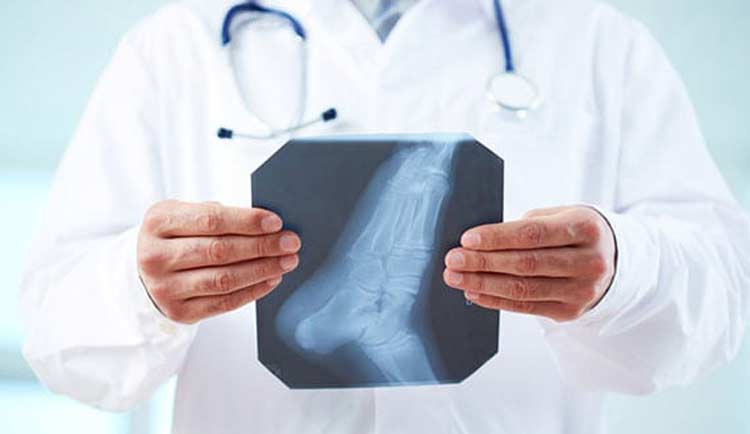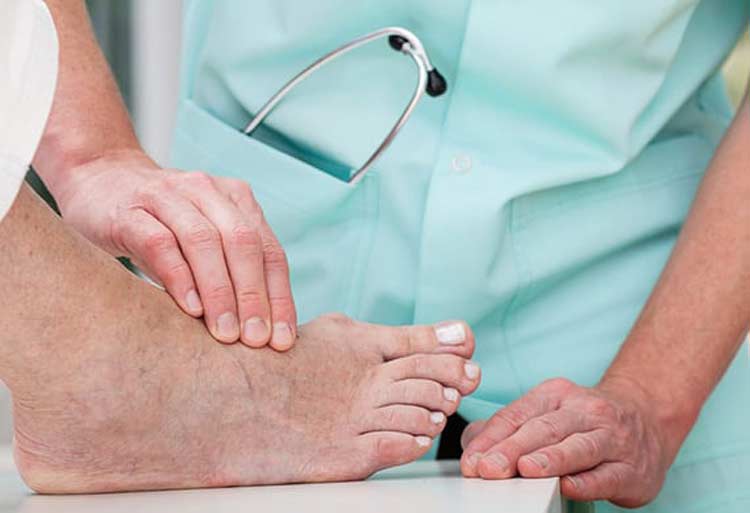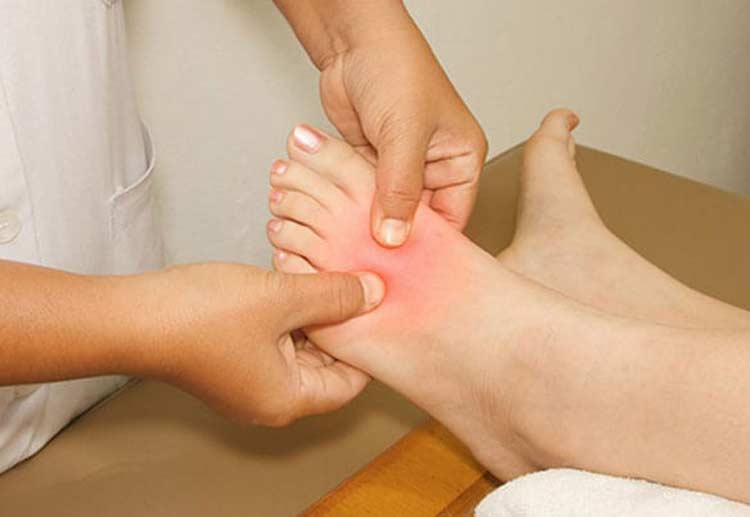
Discover how TOPAZ treatment can help relieve chronic pain.
If you are experiencing ongoing pain from chronic Achilles tendonitis or chronic plantar fasciitis, you may benefit from the TOPAZ treatment. It’s a state-of-the-art procedure meant to be used on patients who have not responded well to conservative (non-surgical) treatments for persistent issues with tissues that support feet or ankles.
- It’s a minimally invasive technique that’s already been used in more than 5 million procedures.
- Ideal candidates for the technique often see positive results with physical therapy and additional support from a foot specialist.
How TOPAZ Works
During the procedure, a device called the TOPAZ MicroDebrider (the “TOPAZ wand”) is applied to the affected area through a small port site. It’s applied in half-second intervals in a grid-like pattern. The wand is moved about a quarter-inch and inserted again to complete the pattern and treat the affected area.
The device, which resembles a sewing needle, removes small amounts of tissue with radio-frequency energy. The radio frequency waves stimulate tissues by causing minor trauma to tissues that haven’t naturally healed. The technique also promotes tissue healing by increasing blood flow to the treated area.
Typically done as an in-office procedure with light or local sedation, the treatment usually takes about 20 minutes. Since it’s a minimally invasive procedure, recovery time isn’t as lengthy as what would be typically experienced with more involved options.


Preparing for TOPAZ Treatment
Prior to the treatment being recommended, patients are thoroughly evaluated. TOPAZ is not meant to be a first attempt at treatment. It’s only when there’s an issue with tissues in the foot or ankle has become chronic in nature (3-6 months or longer) that the treatment is considered. A preoperative X-ray, MRI, CT scan, or ultrasound is performed. This is a step that’s done to confirm that the tissues that will be treated are the source of the discomfort being experienced.
When used to treat plantar fasciitis, the procedure is sometimes done with no incision at all. However, it’s up the discretion of the surgeon to determine if an incision will be necessary to access the affected part of the foot or ankle. A patient’s medical history, especially with regards to foot problems, is also usually taken into consideration during preparations for the procedure.
TOPAZ for Plantar Fasciitis
Irritation of the ligament that attaches the heel to the base of the foot (the plantar fascia) is a condition called plantar fasciitis. Since other conditions can have similar symptoms, it’s important to have a proper diagnosis of plantar fasciitis before considering the TOPAZ treatment. Foot arch problems, a change in activity level, and sudden trauma are some of the common causes of plantar fasciitis.
TOPAZ for Heel Pain
Repetitive or excessive heel pressure is often the cause of heel pain. A common source of heel pain is damage to the Achilles tendon. Heel pain can also be associated with plantar fasciitis and bone spurs. Inflammation of the back of the heel may lead to Achilles tendonitis, a condition often caused by running on hard surfaces, excessive inward foot movements, and tight calf muscles. If non-surgical treatments for heel pain aren’t working, the TOPAZ treatment may correct damage to heel tendons.
Post-Procedure Care
Post-operative care and rehabilitation following the TOPAZ procedure typically involves wearing some type of brace or what’s termed a “walking cast” or walking boot. After a few weeks, patients usually transition to a supporting shoe. Prescription or custom orthotics may also be recommended to avoid placing excessive pressure on the same part of the foot that was treated with the TOPAZ technique. Preferred candidates are otherwise healthy without other serious issues involving their feet or ankles that may affect the outcome of the procedure.
Success Rate
Patients enjoy success with the TOPAZ treatment about 80 percent of the time. Relief following the procedure doesn’t occur immediately after the procedure. In some instances, discomfort may increase slightly before improvements are noticed. However, after post-procedure physical therapy and rehab, patients often notice a significant decrease in pain. As long as patient-specific instructions and guidelines following the treatment are followed, problems with ligaments and tendons in the feet or ankles usually do not return.
Your risk of developing plantar fasciitis, Achilles tendonitis, and similar sources of foot pain can be reduced by wearing supportive shoes and properly stretching and warming up muscles that support your feet and ankles before exercising or participating in your preferred activity. If you do experience persistent pain related to tissues that support your feet, you may benefit from the TOPAZ treatment if other remedies aren’t effective. A podiatrist can recommend options appropriate for your situation.


